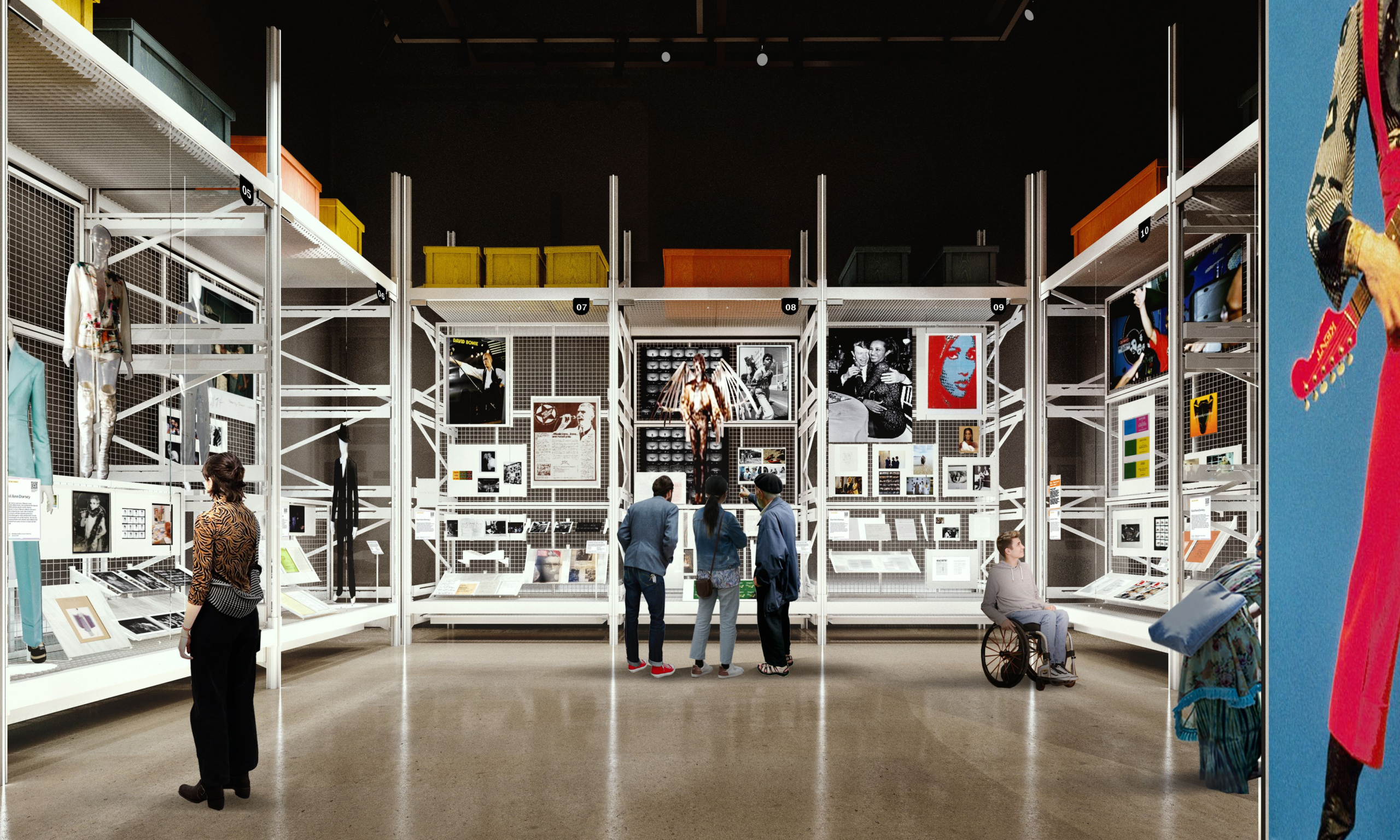The vast new open-access working store will house more than 250,000 objects
Internal render view showing the David Bowie Centre in V&A East Storehouse © IDK
The Victoria and Albert Museum (V&A) has today announced that the long awaited and highly anticipated V&A East Storehouse will open 31 May next year.
The vast new open-access working store will be based at the former 2012 Olympics site in Stratford, east London, and will house more than 250,000 objects. The storehouse will also host the David Bowie Centre, which will open 13 September 2025. Both spaces will be free to enter.
“[The storehouse] sets a new paradigm for access to national collections," said Tim Reeve, deputy director and chief operating officer of the V&A, and chair of the East Bank Board, at a preview earlier today.
Spanning four levels across 16,000 sq. m, the new space, housed in part of the former Olympics Media and Broadcast Centre, is designed by the architects Diller Scofidio + Renfro. A site visit revealed how the collection is stored, highlighting the flexible “kit of parts” system enabling objects to come on and off display more easily.
According to a project statement, this design is intended to “give unprecedented access and greater transparency, breaking down physical barriers and removing glass cases to get visitors closer than ever before to their national collections”.
The Order an Object service will enable visitors to access all objects at the storehouse
Internal render view of the stores at V&A East Storehouse © Diller Scofidio + Renfro
Once open, the V&A promises that a seven-day-a-week Order an Object service will enable visitors to access all objects at the storehouse. Kate Parsons, the V&A’s director of collections care and access, said that the process will be “safe, easy, equitable and meaningful… we’ve taken a risk-based approach”.
Along with over 100 mini curated displays, there will be six spectacular objects on permanent show, all of which are being built into the structure of the new interior. These are the Torrijos Ceiling from the Altamira Palace in Spain (around 1490); the Agra Colonnade from India (1637); a Frankfurt Kitchen by the Austrian designer Margarete Schütte-Lihotzky (1926); the Kaufmann Office by the American architect Frank Lloyd Wright (1937); a section of the exterior facade of the demolished Robin Hood Gardens council estate in Poplar, east London (1972) and a Ballets Russes theatre stage cloth (1924) standing over ten metres high.
The mini-displays dotted around the storehouse will include Transgender and Non-Binary Artists-Art Fund New Collecting and Research—a series of new acquisitions, supported by Art Fund, by artists including the photographer Mariette Pathy Allen, and Conservation-Modern Materials, encompassing objects such as Vivienne Westwood’s 1990s rubberised cotton raincoat.
The David Bowie Centre will reveal “the stories behind the creation of some of Bowie’s iconic albums and personas from Aladdin Sane to The Thin White Duke, and his significant influence on creatives from Lana del Rey to Lil Nas X and Issey Miyake,” says a V&A statement. The archive and collection of Bowie was acquired in February last year with £10m from the Blavatnik Family Foundation set up by the Ukrainian businessman Leonard Blavatnik and Warner Music Group.
Installation of the Torrijos Ceiling, made c1490 from the Palacio de Altamira in Torrijos at V&A East Storehouse
© Victoria and Albert Museum, London
The nearby V&A East Museum is meanwhile due to open spring 2026. Together the twin projects represent the largest UK museum development scheme for decades. Total costs are expected to exceed those of the British Museum’s Great Court £100m project in 2000.
For the V&A East Storehouse, a centrepiece of the new East Bank development, the UK’s Department for Culture, Media and Sport (DCMS) awarded a grant of £50m. This was to fund the V&A’s move from its former store at Blythe House, in west London, which was later sold by the government.
“This has proved to be great value for money,” said deputy director Reeve. “Ninety nine per cent of the works came from Blythe house; we have three to five years growth space here.”

